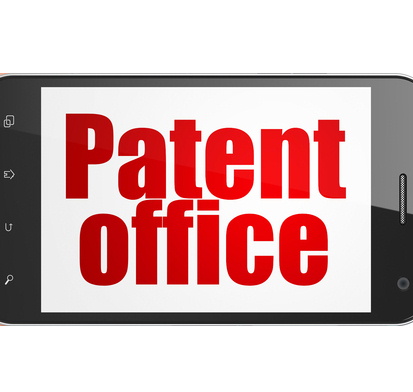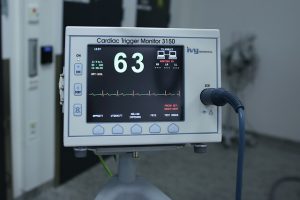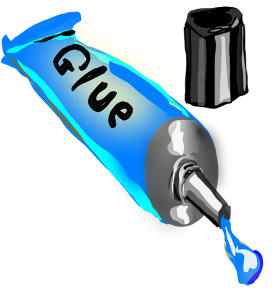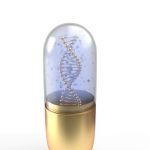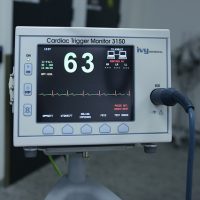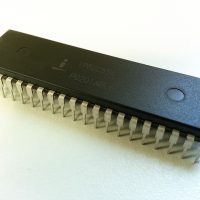Japan Patent Office publishes the Examination Handbook for Patent and Utility Model. Product-by-process claim section of the Examination Handbook is shown below.
2203 Points to Note in Examination When a Claim for an Invention of a Product Recites the Manufacturing Process of the Product
Examiner shall proceed with the examination while paying attention to the following points when determining whether or not “4.3.2 The case where a claim concerning an invention of a product includes a manufacturing method for a product” of “Part II Chapter 2 Section 3 Clarity Requirement” is relevant, and proceeding with the exanimation in cases where it is relevant.
(1) The Examiner shall determine, on the basis of the present handbook, Section 2204, whether or not at least a portion of claims pertaining to an invention of a product corresponds to a "case where a claim concerning an invention of a product includes a manufacturing method for a product".
(2) The Examiner shall determine, on the basis of the present handbook, Section 2205, whether or not, when a determination is made of correspondence to the "case where a claim includes a manufacturing method for a product" in the above (1), regarding the description, whether or not the description corresponds to a "case of existence of impossible/impractical circumstances 1 ." In addition, if a claim and a proof have been made that the circumstances exist in the descriptions, an opinion, etc., a determination is to be made in consideration of the same.
(3) Subsequent to Final Notification of Reasons for Rejection, after receiving a demand for an Appeal Against Examiner's Decision of Rejection/Refusal or a notification of Article 50bis, regarding an amendment which treats a "description of a manufacturing method for the product" as, simply, a description of such aspects as a structure or characteristics, or an amendment which, if a manufacturing method for the product is provided in the invention for the product, simply treats the invention as an invention of the manufacturing method for the product, then the Examiner, normally, shall find that the amendment is an amendment corresponding to a clarification of an unclear description (Article 17bis(5)(iv)). 2
---------------------------------------------------------
1 I.e., " circumstances that is impossible or utterly impractical to define the product by its structure or characteristics at the time of filing."
2 Hypothetically speaking, if the amendment is not performed, then ordinarily, this means that a Notification of Reasons for Rejection for violation of the requirement for definiteness has been notified, and furthermore, in applying the provisions of Article 17bis(5), the legislative intent of the same should be sufficiently taken into consideration so as not to operate any more strictly than necessary. Therefore, this time, the amendment is to be admitted. The provisions of the same paragraph are to be treated as having been provided with the intent of establishing an examination procedure which quickly and accurately secures granting of rights while taking into consideration the basic purpose of the patent system, which is to fully achieve protection for an invention, and in this end, an amendment in response to a Final Notification of Reasons for Rejection is to be performed within a scope in which it is possible to effectively utilize the examination results that have already been performed. Furthermore, it is considered that even if the amendment is admitted, the examination results that have already been performed can generally be effectively utilized.
----------------------------------------------------------
2204 Determination on Whether or Not "When a Claim for an Invention of a Product Recites the Manufacturing Process of the Product" is Relevant
1. Basic idea
(1) The examiner determines whether or not at least a portion of a claim for an invention of a product corresponds to a "case where a claim recites the manufacturing process of the product" by taking into consideration, in addition to the description, the claims, and the drawings, as well as common general knowledge, at the time of the filing of the application, in the technical field to which the invention belongs. (It is necessary to note that even if one of the following types or examples appears to be relevant, there are cases in which different determinations may be made on the basis of common general knowledge in the technical field.)
Particularly, even if a claim corresponds formally to one of the following types or examples showing “where a claim recites the manufacturing process of the product”, when it is clear what structure or characteristics of the product are represented by the manufacturing process (Note)3 considering the description, claims and drawings as well as common general knowledge, at the time of the filing of the application, in the art to which the invention belongs, the examiner does not consider that the claimed invention violates the clarity requirement on the basis that it corresponds to a case "where a claim recites the manufacturing process of the product".
(Note) The Pravastatin Sodium Case decisions (the Supreme. Court of Japan, June 5, 2015, Second Petty Bench, case Nos. 2012 (Ju) 1204 and 2012 (Ju) 2658)
(2) In view of the fact that the burden of proof for the description requirement, in general, is on the applicant side, the examiner may notify, if he/she considers appropriate, a reason for refusal for the violation of the clarity requirement and thereby provide the applicant with an opportunity to argue and verify that "impossible or impractical circumstances" exist, or an opportunity to submit a written opinion and/or amendment. It is appropriate to avoid, by doing so, the situation where a patent is subsequently granted containing a reason for invalidation, or the interests of third parties are unfairly prejudiced.
----------------------------------------------------------
3 An example where it is considered to be clear what structure or characteristics of the product are represented by the manufacturing process, if considering the description, claims and drawings as well as common general knowledge, at the time of the filing of the application, in the art to which the invention belongs, although the case falls under Type (1-1):
"an apparatus having an anchorage formed by inserting a bolt provided with a convex portion into a hole provided with a concave portion so that the concave portion and the convex portion are engaged, and screwing a nut into an end portion of the bolt"
----------------------------------------------------------
2. Types and examples corresponding to "case where a claim recites the manufacturing process of the product"
Type (1-1): Case in which, pertaining to manufacturing, a description of chronological elements exists
"A compound A sodium salt prepared by a process comprising the steps of:
a) forming an enriched organic solution of the compound A;
b) precipitating a compound A as its ammonium salt;
c) purifying the ammonium salt by recrystallization;
d) transposing the ammonium salt to sodium salt; and
e) isolating a compound A sodium salt."
Example of Amendment:
"A manufacturing process for a compound A sodium salt comprising the steps of:
a) forming an enriched organic solution of the compound A;
b) precipitating a compound A as its ammonium salt;
c) purifying the ammonium salt by recrystallization;
d) transposing the ammonium salt to sodium salt; and
e) isolating a compound A sodium salt."
Type(1-2): Case in which, pertaining to manufacturing, a description of a technical feature or condition exists
"A polymer C acquired by reacting a monomer A with a monomer B at 50℃."
"A fluorescent body formed by sintering under 1 to 1.5 atmospheric pressures."
"A rubber manufactured good in which roughening treatment, in which a
particulate substance is caused to collide with the exterior surface, has been applied"
Examples of Amendment:
"A manufacturing method for a polymer C in which a monomer A is reacted with a monomer B at 50℃."
"A manufacturing method for a fluorescent body manufactured via a sintering step under 1 to 1.5 atmospheric pressures."
A manufacturing method for a rubber manufactured good in which roughening
treatment, in which a particulate substance is caused to collide with the exterior surface, has been applied"
Type (1-3): Case of referring to an invention of a manufacturing process
"A rubber composition manufactured using any of the manufacturing methods in claims 1 to 8"
"A polymer manufactured using any of the manufacturing methods in claims 1 to 4"
Examples of Amendment:
(Normally, if an invention of a manufacturing method is left as referred to, it is not possible to prevent, by way of an amendment, a "case in which a manufacturing method for a product is described" from being relevant.)
3. Types and examples not corresponding to a "case where a claim recites the manufacturing process of the product"
Type (2): Case in which, by indicating simply a state of the product, a claim recites the structure or characteristics of the product subject to the invention
"An item in which a resin composition has been cured"
"An article in which an affixed chip is bonded to a sensor chip"
"An item in which A is formed to be of a different thickness from B"
"A composition formed by combining A with B"
"A tire created using a rubber composition"
"A laminated film formed by placing a layer C between a layer A and a layer B"
"Removably configured"
"A member B welded to a member A"
"A chamfered member"
"A lid caulked to a body"
"Spun twisted yarn using roving A and roving B"
"A pigment coated with a polymer A"
"A polymer polymerized a monomer A and a monomer B"
"A PEGylated protein"
"A modified protein A after translation"
"A humanized antibody"
"A protein having an amino acid sequence represented by SEQ. No. X in which at least one amino acid is deleted, substituted or added"
・ In particular, shown below are terms whose concept is established as those specifying the structure or feature (property) of products.
(For example, the definition, etc., of such a term can be found in a dictionary, a textbook, or a technical standards document, etc., and in this light, it is considered that the concept of that term has been established as that specifying the structure or feature (property) of a product.)
"A casting", "A casting product", "A forging"
"A welded part", "A brazed part", "A soldered part", "A fusion-spliced part"
"A machined part", "A cut off part", "A ground surface", "A press-fit surface", "A press-fit structure"
"A sintered object", "A green compact"
"An oriented film", "A blown film"
"Printed parts", "A printed coil", "A printed capacitor"
"A coating film", "A vapor-deposited film", "(as a layer or a film) A coating layer"
"A diffusion layer", "An epitaxial layer", "An epitaxial growth layer";
"Float glass", "A hot-dip zinc-coated steel sheet", "Vulcanized rubber", "An embossed product"
"A welded assembly", "An integrally molded article"
"Isolated cell", "Extract", "Threshed rice", "Spirits", "Plating layer"
(Points to Note)
Even if the wording in a claim differs from that in the operative examples of the above Type (2), it does not mean, thereby, the claim does not fall under Type (2). For example, when there is the wording which is similar to but is different in an expression from one of the operative examples in the above, the relevance to Type (2) is not denied only because of such difference in expression. The Examiner performs the examination based on the above "1. Basic idea".
2205 Determination on “Impossible/Impractical Circumstances” in Examination When a Claim for an Invention of a Product Recites the Manufacturing Process of the Product
1. Basic idea
(1) The Examiner shall determine whether there exist "impossible/impractical circumstances" on the basis of claims/proofs by the applicant. At that time, the Examiner shall also take into consideration technical knowledge in the technical field to which the invention belongs (it is necessary for the Examiner to note that even if the following types and operative examples are formally relevant, there are cases in which different determinations may be made on the basis of technical knowledge in the technical field).
(2) Unless there is reasonable doubt regarding the content of a claim/proof by the applicant regarding the existence of "impossible/impractical circumstances" (normally, unless the Examiner indicates a concrete doubt at the time of a Notification of a Reason for Rejection or the time of a Decision of Rejection), the Examiner shall make a determination that impossible or unrealistic circumstances exist.
2. Types and operative examples corresponding to "impossible/unrealistic circumstances"
Type (i): Case in which analyzing the structure or features of an item at application time is technically impossible
Type (ii): Case in which, in view of the face that, due to the nature of a patent application, rapidity, etc., are required, significantly excessive financial expenditure or time would be required to perform work to identify the structure or properties of the item.
・ Cells, etc., created by a new genetic manipulation
(Judgment of the Second Petty Bench of the Supreme Court (June 15, 2015(Minshu vol. 69 No. 4 Page 700, Minshu vol. 69 No. 4 Page 904)))
・ A monoclonal antibody prepared by a hybridoma cell A
(Reference Decision: Appeal 2014-17732)
・ Animal and plant obtained by the breeding method such as crossbreeding
(Reference Decision: Appeal 2014-10863)
Reference examples are provided at the end of this section, in which applicants of a patent assert or verify cases where a patented invention falls under Type (i) or (ii), or both and "Impossible/Impractical Circumstances" exists.
3. Types and operative examples not corresponding to "impossible/unrealistic circumstances"
Type (iii): Case in which a relationship with the invention of the present application is completely undescribed
・ A case in which, simply, only a claim that time is required for creating the "the claims" has been made
・ A case in which, simply, only a claim that performing description using a manufacturing method is easier to understand
● Reference examples of arguments and verification presented by applicants involving “impossible or impractical circumstances” (See 2.)
The followings are reference examples of arguments and verification involving “impossible or impractical circumstances”
(Note) The JPO hereby provides applicants with those examples, for a reference purpose, where the existence of “impossible or impractical circumstances” can be recognized in patent examination 4 , but does not show types of examples in an exhaustive manner. Thus, even if a case does not fall under any of those, it does not necessarily mean that the existence of “impossible or impractical circumstances” for that case cannot be recognized. Conversely, even if the formality of any of the examples below is followed, such circumstances are not always recognized, since, in practice, the existence of “impossible or impractical circumstances” is considered on a case by case basis, taking into account the specific content of arguments and verification.
Regarding claims for products reciting manufacturing processes of the products, when a person skilled in the art cannot understand features of a product (structure, property, etc.) even considering the content of the description and drawings as well as the common general knowledge at the time of the filing of an application, to the extent that patentability requirements such as novelty and inventive step cannot be determined, the invention is deemed to be unclear regardless of the existence of “impossible or impractical circumstances”, since the invention cannot be understood from one claim in such a case 5 .
The following examples are shown on the premise that an invention does not involve such unclearness.
Furthermore, the following examples do not prejudge whether an invention satisfies the patentability requirements such as novelty and inventive step.
----------------------------------------------------------
4 In procedures in which a third party is involved after a patent is granted, a conclusion on whether the circumstances exist or not may change depending on the contents of arguments and verification presented by the parties.
----------------------------------------------------------
Example 1
(1) Claim
[Claim 1] An aromatic device comprising:
a holder having at least one air vent opening; and
an aroma generation source and a heating element disposed in said holder,
wherein said aroma generation source includes an activated carbon molding and is heated with said heating element at the temperature in the range from X to Y degrees Celsius,
wherein said aroma generation source is produced by heating said activated carbon molding impregnated with a solution of an aromatic ingredient A at the temperature of less than or equal to the heating temperature of said heating element for Z hours or longer.
(2) Arguments and verification regarding “impossible or impractical circumstances” presented by the applicant in a written opinion
The present invention relates to an aromatic device having an aroma generation source where an aromatic ingredient A existing near the surface of an activated carbon molding is volatilized and the aromatic ingredient existing deeply inside of the activated carbon molding remains. In order to specify the feature of the present invention which cannot be seen in the prior art, claim 1 includes a part stating that said activated carbon molding impregnated with a solution of an aromatic ingredient A is heated at the temperature of less than or equal to the heating temperature of said heating element for Z hours or longer. With that claim element as described, the present invention can obtain an aromatic device which is capable of preventing volatilization of the aromatic ingredient in storage, thereby it can solve the problem of the prior art that the emission efficiency of the aromatic ingredient varies depending on the state of preservation (see paragraphs X-X in the description of the present application).
----------------------------------------------------------
5 Examination Guidelines for Patent and Utility Model, Part II, Chapter 2, Section 3, Clarity Requirement, 4.3.1(2).
----------------------------------------------------------
However, it is not possible to directly define the feature of the present invention described above by the structure or property of the product.
First, it is impossible to specify the feature of the invention (i.e. the aromatic ingredient exists not near the surface but deeply inside of the activated carbon molding) simply by the wording such as “said aromatic ingredient exists only in the region deeper than XX μm from the surface”, in light of the fact that each activated carbon molding has a different structure and different properties associated therewith. In addition, there is no other wording clearly specifying the feature described above by structure or property.
Secondly, it is also impossible to specify the structure or property of the aroma generation source having the feature described above by analyzing the results of measurement, even considering the analytical technique at the time of the filing of the application. Specifically, methods of measuring the state of existence of materials in detail include, for example, a scanning electron microscope (SEM), …, but any of those measuring methods can only measure the state of the surface of samples and thus is not appropriate for analyzing porous material having complicated inside structures such as activated carbon. Even if an analytical technique such as X-ray diffraction (XRD) is used, accurate data cannot be obtained due to volatilization of the aromatic ingredient. As described, there was actually no appropriate means for measurement and analysis.
Assuming that the state of the aromatic ingredient existing inside of the activated carbon molding can be measured by cutting off a sample of the molding to expose the inside thereof, this only reveals a microscopic state of the specific sample. It is utterly impractical to find an index specifying the feature described above through numerous trial-and-error processes by performing difficult operations and measurements repeatedly many times and then utilizing statistical processing methods.
In Example 1 described above, the written opinion explains in a concrete manner that the wording cannot be found specifying the structure or property concerning the difference between the present invention and the prior art, and that it is impossible or impractical to analyze and specify such structure and property based on the measurement. Therefore, Example 1 is deemed to be the case where the existence of “impossible or impractical circumstances” can be recognized.
Example 2
(1) Claim
[Claim 1] A thin film semiconductor device comprising:
a structure of …; and
an oxide semiconductor film consisting of XXX oxide as an active layer,
wherein the oxide semiconductor film is formed on a substrate by sputtering, using a target of metal oxide, at the temperature of the surface of the substrate from X to Y degrees Celsius.
(2) Arguments and verification regarding “impossible or impractical circumstances” presented by the applicant in a written opinion
An oxide semiconductor film consisting of XXX oxide is formed on a substrate by sputtering under controlling the temperature of the surface of the substrate from X to Y degrees Celsius, so that the resulting oxide semiconductor film has high crystallinity. The present invention provides a thin film semiconductor device having the resulting oxide semiconductor as an active layer, thereby a high performance of switching can be achieved (see the description of the present application, paragraphs X-X).
A conventional thin film semiconductor device using an oxide semiconductor film can be only obtained with a relatively low performance due to low crystallinity of an oxide semiconductor film (see JP YYYY-XXXXXX A). This means when the thin film semiconductor is used for a cellular phone of which battery capacity is limited, available time on one charge is not long, and thereby usability as the cellular phone is impaired (see the description of the present application, paragraphs Y-Y).
Though the difference between the present invention and the prior art is attributed to the difference in crystallinity of an oxide semiconductor film, in light of the non-uniformity of the thin film crystal, it is not possible categorically to specify the structure or property of the difference.
Meanwhile, the difference in crystallinity between them could be measured by X-ray diffraction (XRD) in principle, however, in practice, it is required to produce or purchase the statistically-significant number of thin film semiconductor devices of the present invention and those of the prior art respectively, and to measure a numerical feature of XRD spectrum for statistically processing the feature, and then to find a significant index and its actual value to distinguish between the present invention and the prior art through those processes. Those processes need enormous time and costs. Furthermore, since the prior art has huge variations, the number to be statistically significant cannot be clearly determined.
Therefore, it is not practical that the feature of the present invention is specified by the structure of property of the product of the invention after the index and its value are found in the way as described above.
In Example 2 described above, similar to Example 1, the written opinion also explains in a concrete manner that the wording cannot be found specifying the structure or property concerning the difference between the present invention and the prior art, and that it is impossible or impractical to analyze and specify such structure and property based on the measurement. Therefore, Example 2 is deemed to be the case where the existence of “impossible or impractical circumstances” can be recognized.
Example 3
(1) Claim
[Claim 1] An oil-in-water type creamy emulsion composition for foods comprising water, an oil
component, emulsifiers, a component A and a component B, and having viscosity of X-Y mPa・s ,
wherein said emulsion composition incudes an emulsifier X and an emulsifier Y with 10-20/30-40 weight ratio,
and wherein an oil phase containing said emulsifiers, the component A and the component B are prepared in advance by mixing and stirring them and then the resulting
product is added to a water phase to obtain said emulsion composition.
(2) Arguments and verification regarding “impossible or impractical circumstances” presented by the applicant in a written opinion
The present invention prepares in advance an oil solution in which the prescribed emulsifiers, component A and component B are dispersed in the solution, and then the oil solution is added to a water phase for emulsion. The present invention provides an oil-in-water type creamy emulsion composition for foods having a good foam stability compared to one obtained by a conventional method in which a water phase dissolving an emulsion, a component A and a component B is added to an oil phase for emulsion (see the description of the present application, paragraphs X-X).
As described, compared to the prior art, the good foam stability achieved by the present invention is caused by the microscopic difference in a dispersed state of the components provided by the different manufacturing process. The microscopic difference in the dispersed state cannot be identified by the general index such as a composition or viscosity.
Even if it is attempted to express the property of foam stability itself in a numerical range, a microscopic dispersed state in an oil-in-water type creamy emulsion composition for foods varies depending on a composition of a raw material, a temperature, a stirring speed and other manufacturing conditions. Then, if a microscopic dispersed state is different, a numerical value of foam stability naturally changes. Thus, manufacturing the product with raw materials constituting various compositions under various manufacturing conditions such as the temperature and the stirring speed and measuring the foam stability of each resulting product requires impractical numbers of experiments and drastically huge economic expenses. Furthermore, the result cannot be expressed in a claim comprehensively.
Therefore, it is utterly impractical to “specify a product directly by structure or property at the time of the filing of an application” with regard to the present invention.
Example 3 as described falls under the case where the concrete aspects of the structure or property of the product vary depending on various concrete modes of the manufacturing method recited in the claim, and those concrete aspects cannot be expressed comprehensively, thus it is impossible or impractical to specify the product directly by its structure or property. The written opinion explains the situation concretely. Therefore, Example 3 is deemed to be the case where the existence of “impossible or impractical circumstances” can be recognized.
Example 4
(1) Claim
[Claim 1] A flavor improving agent prepared by the successive steps of:
obtaining a concentrated solution by heating and concentrating sugar cane juice at the
temperature of 120-130 degrees Celsius until an indicator of a sugar refractometer becomes 70-80 degrees with a Brix scale; and collecting distillation by collecting and cooling vapor which can be obtained by distilling said concentrated solution at the temperature of 120-130 degrees Celsius.
(2) Arguments and verification regarding “impossible or impractical circumstances” presented by the applicant in a written opinion
The present invention relates to a flavor improving agent obtained by collecting the distillation of sugar cane juice through each manufacturing process described in claim 1 of the present invention. The flavor improving agent of the present invention is manufactured by heating and concentrating the sugar cane juice at the temperature of 120-130 degrees Celsius until an indicator of a sugar refractometer becomes 70-80 degrees with a Brix scale before distillation, thereby the flavor improving agent of the present invention can have an effect of adding an agreeable natural flavor of brown sugar on foods compared to the conventional flavor improving agent produced by simply distilling and purifying concentrated sugar cane juice without heating and concentrating the juice which can bring such high sugar content. This comparison is clearly shown in Examples X-X and Comparative examples Y-Y in the present description.
First, the description “an agreeable and natural flavor” cannot be expressed quantitatively such as in the numerical range because it is an index relying on a subjective preference of people.
It is the common general knowledge at the time of the filing of the present application that a flavor improving agent derived from a natural product such as sugar cane juice is a composition containing various different chemical substances, and the flavor becomes different from an interaction of the each chemical substance. The flavor improving agent of the present invention and the conventional flavor improving agent as described above have 99.99 wt% of the same composition, as described in Table X in the present description. From this fact, it is apparent that very small amount of a component (a trace component) contributes to giving a good effect of the flavor improving agent of the present invention as described above. However, there are a very large number of such components which constitute the flavor improving agent of the present invention, and some of those components are less than the detection limit of analytical instruments.
Therefore, it is impossible to analyze and specify which chemical substance in trace components contributes to giving an effect of adding a good flavor among a very large number of trace components constituting the flavor improving agent of the present invention. This is because there are a large number of types of chemical substances contained in the analysis objects and the components less than the detection limit cannot be analyzed.
Assuming that an analyzer which has a quite low detection limit of concentration is used and thereby the trace components constituting the flavor improving agent can be all specified, a chemical substance which generates “an agreeable and natural flavor” of the present invention cannot be specified just by identifying a flavor of each trace component because a flavor in theflavor improving agent is generated by blending flavors of a plurality of chemical substances. Therefore, in order to specify the chemical substance, it is required to try all the combination of all chemical substances constituting the flavor improving agent of the present invention including a large number of trace components and to identify the flavor generated by each combination one by one, which needs an enormous number of trials. In addition, for these trials, a large number of all trace components should be purified until they reach to a high purity respectively since an influence of a chemical substance other than a chemical substance used for a trial should be completely eliminated.
In conclusion, it would have to be said for “a flavor improving agent” of claim 1 of the present invention that it is utterly impractical to specify “a flavor improving agent” directly by its structure or property, by means of clearly specifying component(s) contributing to the effect of the present invention.
In Example 4 as described above, the written opinion concretely explains that it is impossible or impractical to specify the product directly by its structure or property since the product is derived from a natural product. Therefore, the present example is deemed to be the case where “impossible or impractical circumstances” exist.
Example 5
(1) Claim
[Claim 1] A polymerized composition prepared by the steps of:
reacting preliminarily a compound having three or more mercapto groups in one molecule and a compound having two or more isocyanate groups in one molecule for 5 to 10 minutes at the temperature of 40-50 degrees Celsius; and then
reacting a reaction solution containing the oligomer obtained by the reaction described above, a compound having two mercapto groups in one molecule and ….
(2) Arguments and verification regarding “impossible or impractical circumstances” presented by the applicant in a written opinion
… A polymerized composition defined in claim 1 comprises a compound having three or more mercapto groups in one molecule as a raw material, and further comprises an oligomer obtained under the reaction condition that the compound is preliminary reacted at the temperature of 40-50 degrees Celsius for 5-10 minutes. Therefore, a structure of the resulting polymerized composition becomes absolutely too complicated to express by a general formula (a structural formula), whichis the common general knowledge for a person skilled in the art. It is also impossible to express the polymerized composition by the property because a property of a substance cannot be easily understood until a structure thereof is specified, as the property can be determined accordingly, and also because a property of a resulting polymerized composition obtained by a reaction of multiple different kinds of monomers varies depending on a compounding ratio of monomers or a reaction condition. Namely, a polymerized composition defined in claim 1 of the present invention cannot be specified directly by the structure or property of the product, but can be specified only by a process (manufacturing process) for preparation of the product.
Therefore, the invention of the polymerized composition defined in claim 1 is deemed to be the case where impossible or utterly impractical circumstances to “specify the product directly by its structure or property at the time of the filing of an application” exist.
In Example 5 as described above, the written opinion concretely explains that it is impossible or impractical to specify the product directly by its structure or property since the product is a polymer having complicated and a wide variety of structures. Therefore, the present example is deemed to be the case where the existence of “impossible or impractical circumstances” can be recognized.

